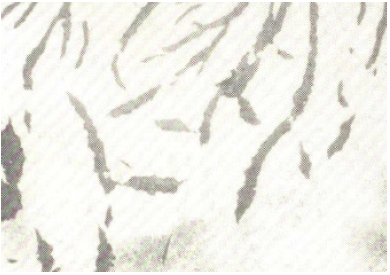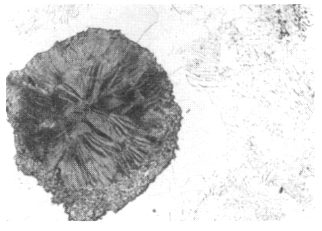Segregated graphite
Graphite precipitates from the austenite formed during primary and eutectic crystallization upon further cooling as a secondary precipitate. It crystallizes at the graphite flakes already present so that it has no particular effect on structure. However, it can sometimes be distinguishable from the original graphite flakes as a papillary accumulation, as can be seen in Fig. 1 and Fig. 2.
This is referred to as segregated graphite formation. Segregated graphite can also occur during the eutectoid transformation of austenite and the heating of cast iron to high temperatures. For example, Fig. 3 shows the structure of a steelmaking die that has been in operation for a long time. As can be seen from the nearly completely ferritic matrix, the carbon contained in it accumulated at the graphite flakes. This increased the thickness of the original flakes.
Just like flake graphite cast iron, nodular graphite cast iron can also be subject to the formation of segregated graphite. Here, the graphite forms films along the existing graphite nodules, as can be seen in Fig. 3.
Additional references:
Graphite degeneration
Graphite form
Rim zone graphite degeneration
Chunky graphite
Kish graphite
Interdendritic graphite
Tempering carbon
Flake graphite
Vermicular graphite




